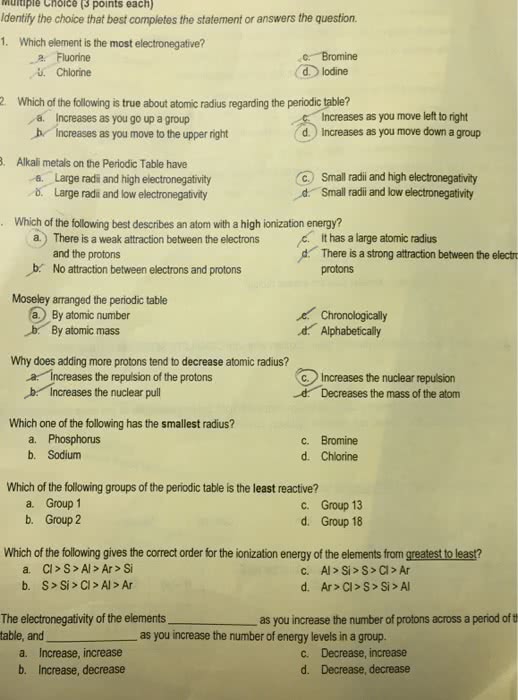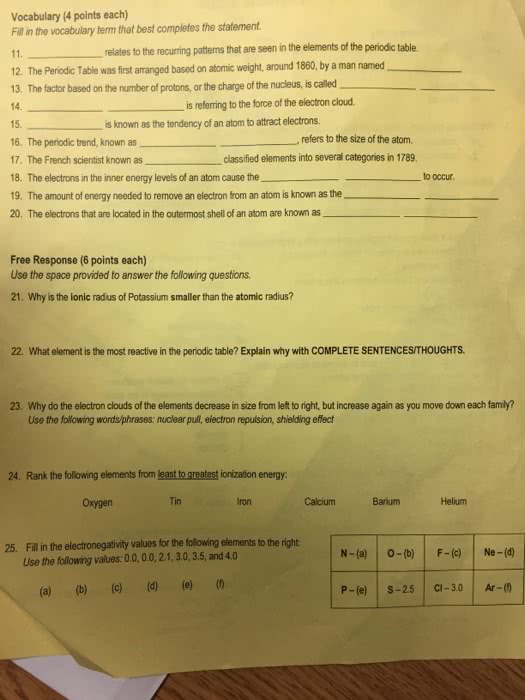CHEM-UA 125 Chapter Notes - Chapter 8: Electron Configuration, Atomic Orbital, Atomic Number
109 views4 pages
5 Jun 2014
School
Department
Course
Professor
Document Summary
Original periodic table (mendeleev)-- periodic law: when arranged by atomic mass, the elements exhibit a periodic recurrence of similar properties modern periodic table (moseley): arranges the elements by atomic number, not by mass. How does the electron configuration of an element relate to its chemical and physical properties? the distribution of electrons within the levels and sub levels of its atoms. Hund"s rule-- when orbitals of equal energy are available, the electron configuration of lowest energy has the maximum number of unpaired electrons with parallel spins. Group 1: highly reactive metals lose the outer electron when they form ionic compounds with nonmetals all react with water. Group 7a: reactive nonmetals occur as diatomic molecules form ionic compounds with metals in which the ion charge is 1- covalent compounds with hydrogen to make acidic solutions in water covalent compounds with carbon. Trends in atomic size atomic size varies slightly from substance to substance.
Get access
Grade+20% off
$8 USD/m$10 USD/m
Billed $96 USD annually

Homework Help
Study Guides
Textbook Solutions
Class Notes
Textbook Notes
Booster Class
40 Verified Answers
Class+
$8 USD/m
Billed $96 USD annually

Homework Help
Study Guides
Textbook Solutions
Class Notes
Textbook Notes
Booster Class
30 Verified Answers
Related textbook solutions
Chemistry: Structure and Properties
2 Edition,
Tro
ISBN: 9780134293936
Basic Chemistry
5 Edition,
Timberlake
ISBN: 9780134138046
Principles of Chemistry Molecular Approach
4th Edition,
Tro
ISBN: 9780134112831
Principles of Chemistry Molecular Approach
3rd Edition, 2014
Tro
ISBN: 9780321971944
Chemistry: Structure and Properties
2nd Edition,
Tro
ISBN: 9780134293936
Chemistry: A Molecular Approach
3rd Edition,
Tro
ISBN: 9780321809247
Chemistry: A Molecular Approach
5th Edition,
Tro
ISBN: 9780134874371
Principles of Chemistry: A Molecular Approach
4th Edition,
Tro
ISBN: 9780134895741
Chemistry: The Central Science
14th Edition, 2017
Brown
ISBN: 9780134414232

